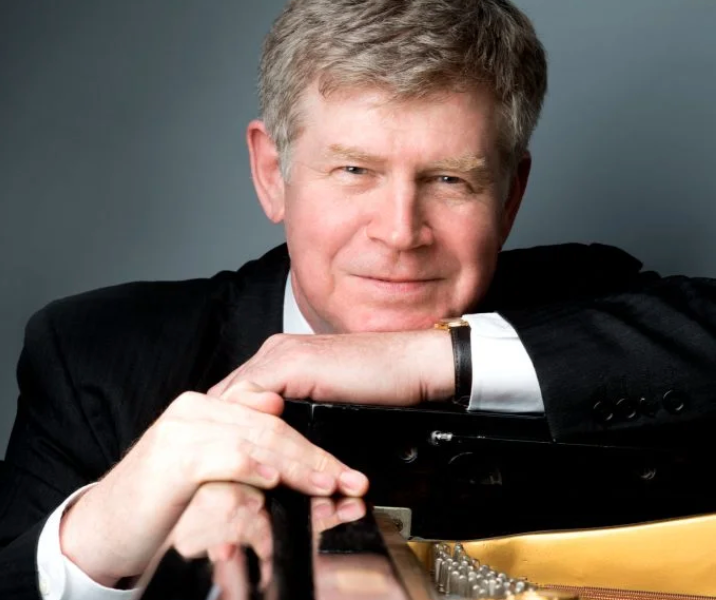Ian Hobson: The Complete Schumann Piano Works-“Sonata Forms” in Review
Ian Hobson, piano
Tenri Cultural Institute, New York, NY
December 16, 2022
Strength and tenderness. Ian Hobson and Robert Schumann. As someone who uses words to describe music, I find myself at something of a loss how adequately to respond to Ian Hobson’s superb Schumann recital last night. Another installment in his “almost complete” presentation of the composer’s piano works, this one focused on the pieces that Schumann titled “Sonata” (except for No. 1) or movements that were originally conceived for a sonata and not used.
Mr. Hobson began with the single-movement Allegro in B minor, Op. 8, an early work (1831) dedicated to Baroness Ernestine von Fricken (also a student of Friedrich Wieck, she and Schumann were briefly engaged in 1834). Intended to serve as the first movement of a sonata, we know the other movements were at least sketched but forever lost, as the excellent program notes by the legendary Richard Dyer remind us. Its showy brilliance is reminiscent of Hummel, one of Schumann’s influences, as well as Paganini, who had just appeared with his devilish act in Leipzig. But the seriousness of the announcement of the “motto” theme B-C#-F#, is the real matter at hand. It unites the entire movement, appearing in the bass, or the top line melody, or middle-voice accompanimental figures, a token of Schumann’s obsessive study of counterpoint as well as scores by Beethoven, Schubert, and others. Mr. Hobson made this movement make musical sense. All of his virtues were present: a fearless virtuosity, but one that made ample room for the tender lyrical moments. Indeed one wonders why it isn’t performed more often, but it takes insight as well as fingers.
The rest of the first half was occupied with the multi-titled Sonata No. 3 in F minor, Op. 14 (1836). It underwent revisions and contortions (1853, by Schumann, and posthumously by Brahms), being known as Concert(o) sans orchestre, and Grosse Sonate at different times. Mr. Hobson restored one of the cut Scherzo movements, and two variations in the middle movement. With hindsight and biographies, we know of the tortured romance between Schumann and Clara Wieck, a virtuoso pianist who was the daughter of Schumann’s piano and composition teacher. Since the father strenuously disapproved of the suitor, the lovers resorted to all sorts of clandestine messaging—for us, the most interesting are the musical “ciphers” or encoding of Clara’s name by Schumann. Usually a descending five- or six-note motto, it is a unifying device used often by the composer. The first movement boldly states it outright at the beginning, and it is in every movement. Mr. Hobson’s playing was so organized (I mean that as a compliment!) that I had time to think that perhaps Schumann’s obsessive study of counterpoint was his way of staving off the chaos in his mind. And of course, that lovely variation movement- no cipher needed here, the theme is by Clara (of course her melody also descends, through a fifth). The sonata was premiered in a salon, that of Henriette Voigt (the dedicatee of Sonata No. “2” see below), in September 1836, and is dedicated to Moscheles.
After intermission, Mr. Hobson presented the best-known work of the four on this program: the Sonata No. 2 in G minor, Op. 22 (1833-1835/1838). (Never mind the incoherent numbering of these sonatas.) Clara wrote to her future husband: “I love it just as I love you; it expresses your whole being with such clarity, and at the same time it’s not too incomprehensible.” However, she asked him to simplify the “far too difficult” last movement, for “even though I already understand it and will play it if need be, other people, the public, even professional musicians—those for whom one composes—won’t understand it at all.” Once again, Mr. Hobson handled the G minor frenzy in Schumann’s quick movements with absolute confidence. The late Schumann biographer John Daverio once contacted me: What did I think when Schumann’s tempo was So rasch wie möglich (as fast as possible) and then later the composer adds Noch rascher (faster still)? I replied that for me it represents striving for the unattainable. Whenever I attend a concert with some Schumann, I listen for this quality. Tonight, I heard it, the “almost” falling-off-the-edge rush. There was plenty of Eusebian dreaminess in the slow movement, a solo piano reworking of an 1828 song Im Herbste (In Autumn): “Be off with you, O sun,/Hurry away from here!/So that she might be warmed/By me alone!”
As a sort of built-in encore, Mr. Hobson offered the original finale conceived for the above G minor sonata: Presto passionato (1835), and wow, this is where I can’t possibly do justice to the powerful abandon he conveyed. It is probably a good thing that Schumann excised it from the sonata and replaced it—its symmetry is a bit square, barely masked by the extreme tempo, though it contains many metric ambiguities (probably what inspired Clara’s comments above).
There are two more Schumann/Hobson events this season in February and April. A word to the wise: Don’t miss them.

